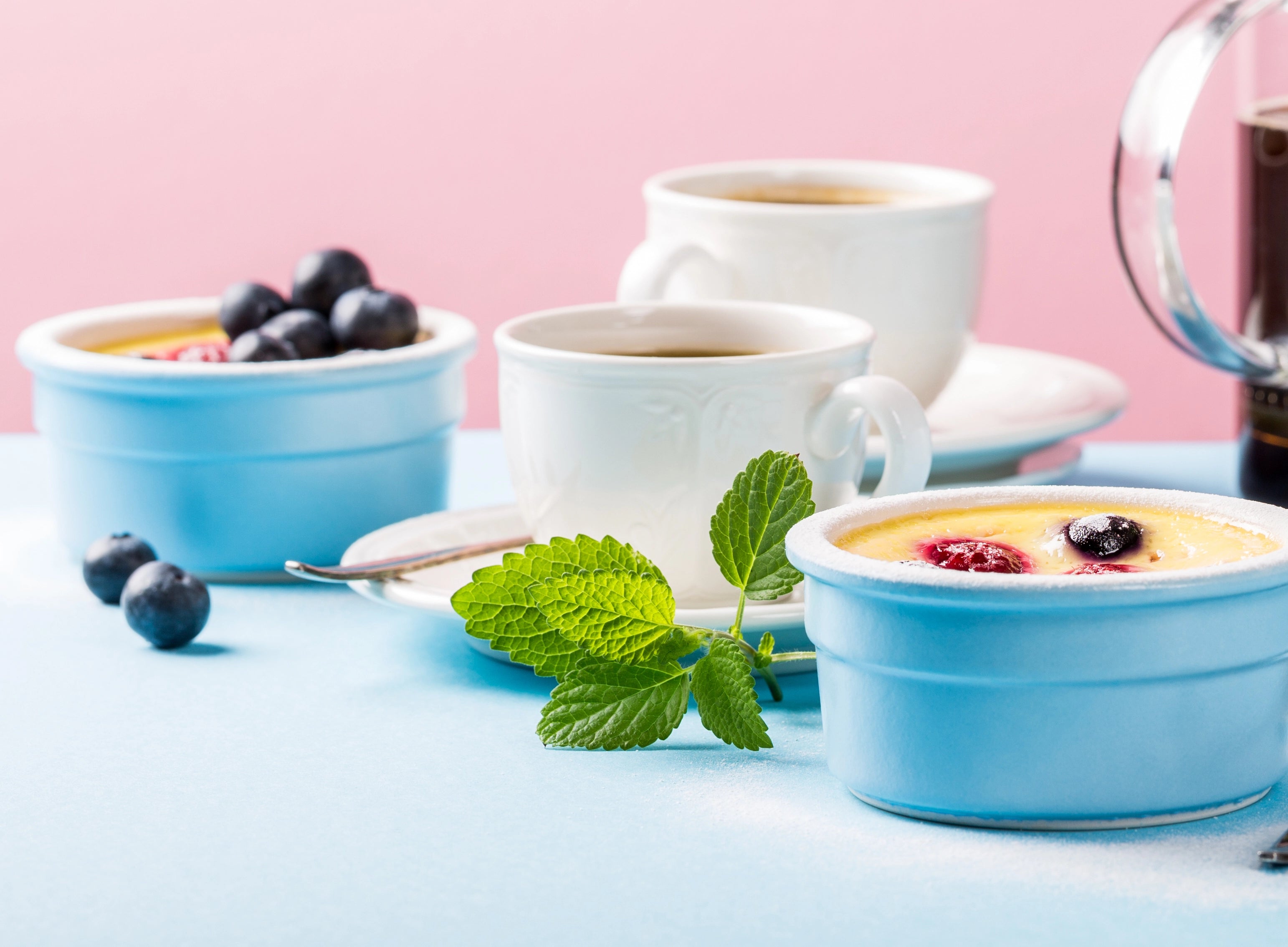In the world of kitchenware, choosing the right tool for the job is essential. Whether you're an experienced chef or a home cook, understanding the differences between ceramic cups and ramekins can greatly impact your culinary creations. This article delves into the unique features and benefits of ceramic cups versus ramekins, helping you make informed decisions for your kitchen needs. Read on to explore the ceramic cup vs ramekin debate and discover which one suits your culinary tasks best.
Topics Covered in the Article:
What Are Ceramic Cups and Ramekins?
Key Differences Between Ceramic Cups and Ramekins
Advantages of Ceramic Cups
Advantages of Ramekins
Common Uses for Ceramic Cups
Common Uses for Ramekins
Care and Maintenance
Comparing Ceramic Cups and Ramekins in Daily Use
Tips for Choosing the Right Ceramic Cup or Ramekin

What Are Ceramic Cups?
Ceramic cups are versatile kitchen items made from non-metallic minerals, typically clay, which are fired at high temperatures. Known for their durability, heat retention, and being microwave and dishwasher safe, ceramic cups are ideal for serving hot beverages, baking, and more.
What Are Ramekins?
Ramekins are small, cylindrical dishes commonly used for baking and serving individual portions. Made from porcelain, ceramic, or glass, ramekins are perfect for dishes that require high-temperature baking, such as soufflés, crème brûlée, and custards.

Key Differences Between Ceramic Cups and Ramekins
| Feature |
|
Ramekins |
|
Material |
Made from clay, often with a glaze finish |
Typically made from porcelain or ceramic |
|
Uses |
Ideal for hot beverages, soups, desserts, and even baking small cakes |
Perfect for baking dishes that require high temperatures, like soufflés and crème brûlée |
|
Size and Shape |
Available in various sizes and shapes, generally with a handle |
Small, cylindrical, usually uniform in size and shape |
|
Heat Retention |
Excellent heat retention, keeping beverages and soups warm longer |
Retains heat well, ensuring even cooking |
|
Durability |
Highly durable, resistant to chipping and cracking |
Durable but can be more fragile due to their smaller size |
|
Aesthetic Appeal |
Wide range of colors and designs, adding charm to any kitchen |
Classic and elegant, often in white or neutral tones |
|
Microwave and Dishwasher Safe |
Safe for microwave and dishwasher use, check manufacturer instructions |
Not always safe for microwave use, check manufacturer instructions |

Advantages of Ceramic Cups
Versatility: Ceramic cups are multi-functional, suitable for both serving and baking. They can withstand high temperatures, making them perfect for oven-to-table use.
Durability: The robust construction of ceramic cups ensures they last long, even with frequent use. Their resistance to chipping and cracking makes them a reliable choice for daily use.
Heat Retention: One of the standout features of ceramic cups is their ability to retain heat. This makes them ideal for serving hot beverages and soups, keeping them warm for longer periods.
Microwave and Dishwasher Safe: Most ceramic cups are safe to use in the microwave and dishwasher, making them convenient for everyday use.
Aesthetic Variety: Ceramic cups come in a wide range of colors, patterns, and designs, allowing you to choose ones that match your kitchen decor and personal style.
Advantages of Ramekins
Perfect Portioning: Ramekins are designed for individual servings, making them perfect for dishes that require precise portion control, such as souffles and custards.
Even Cooking: The small, uniform size of ramekins ensures even cooking, which is crucial for delicate dishes like crème brûlée.
Presentation: Ramekins add a touch of elegance to your table setting. Their classic design makes them suitable for formal dinners and casual gatherings alike.
Common Uses for Ceramic Cups
Hot Beverages: Ideal for coffee, tea, hot chocolate, and more.Desserts: Perfect for serving desserts like mousse, pudding, and ice cream.
Baking: Suitable for baking individual portions of cakes, pies, and quiches.
Soup and Stew: Excellent for serving hot soups and stews, thanks to their heat retention properties.
Microwave and Dishwasher Safe: Convenient for everyday use, suitable for reheating and easy cleaning.
Common Uses for Ramekins
Baking: Essential for baking individual soufflés, crème brûlée, and custards.
Snacks: Great for serving small portions of snacks, dips, and sauces.
Portion Control: Ideal for pre-measured ingredients in cooking and baking.
Elegant Presentation: Perfect for serving appetizers and side dishes in a visually appealing way.
Care and Maintenance
Ceramic Cups:
- Can be placed in the dishwasher if labeled as dishwasher safe.
- Generally safe for microwave use.
- Avoid sudden temperature changes to prevent cracking.
Ramekins:
- Generally dishwasher safe, but check manufacturer’s instructions.
- Can be used in the oven, microwave, and freezer.
- Handle with care to avoid chipping and cracking.
Comparing Ceramic Cups vs Ramekins in Daily Use
Ceramic Cups in Daily Use:
- Ideal for morning coffee or tea.
- Convenient for microwaving and dishwasher cleaning.
- Suitable for various culinary applications beyond beverages.
Ramekins in Daily Use:
- Perfect for preparing and serving individual desserts.
-
Adds an elegant touch to meal presentation.
Tips for Choosing the Right Ceramic Cup vs Ramekin
Choosing a Ceramic Cup:
- Consider the size and capacity based on your needs.
- Look for microwave and dishwasher-safe options.
- Choose a design that complements your kitchen decor.
Choosing a Ramekin:
- Select the appropriate size for your recipes.
- Ensure the ramekin is oven-safe up to high temperatures.
- Opt for durable materials that can withstand frequent use.
FAQ
Can ceramic cups go in the microwave? Yes, most ceramic cups are microwave-safe, but always check for any metallic decorations that may not be suitable for microwaving.
Are ceramic cups dishwasher safe? Generally, ceramic cups are dishwasher safe. However, it's best to refer to the manufacturer's instructions to avoid any potential damage.
Can ramekins be used for serving beverages? While ramekins are primarily used for baking and serving individual dishes, they can also be used for beverages, though they are not as commonly used for this purpose as ceramic cups.










